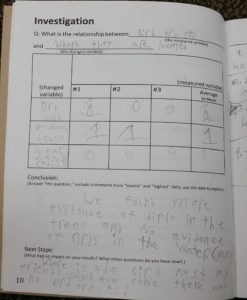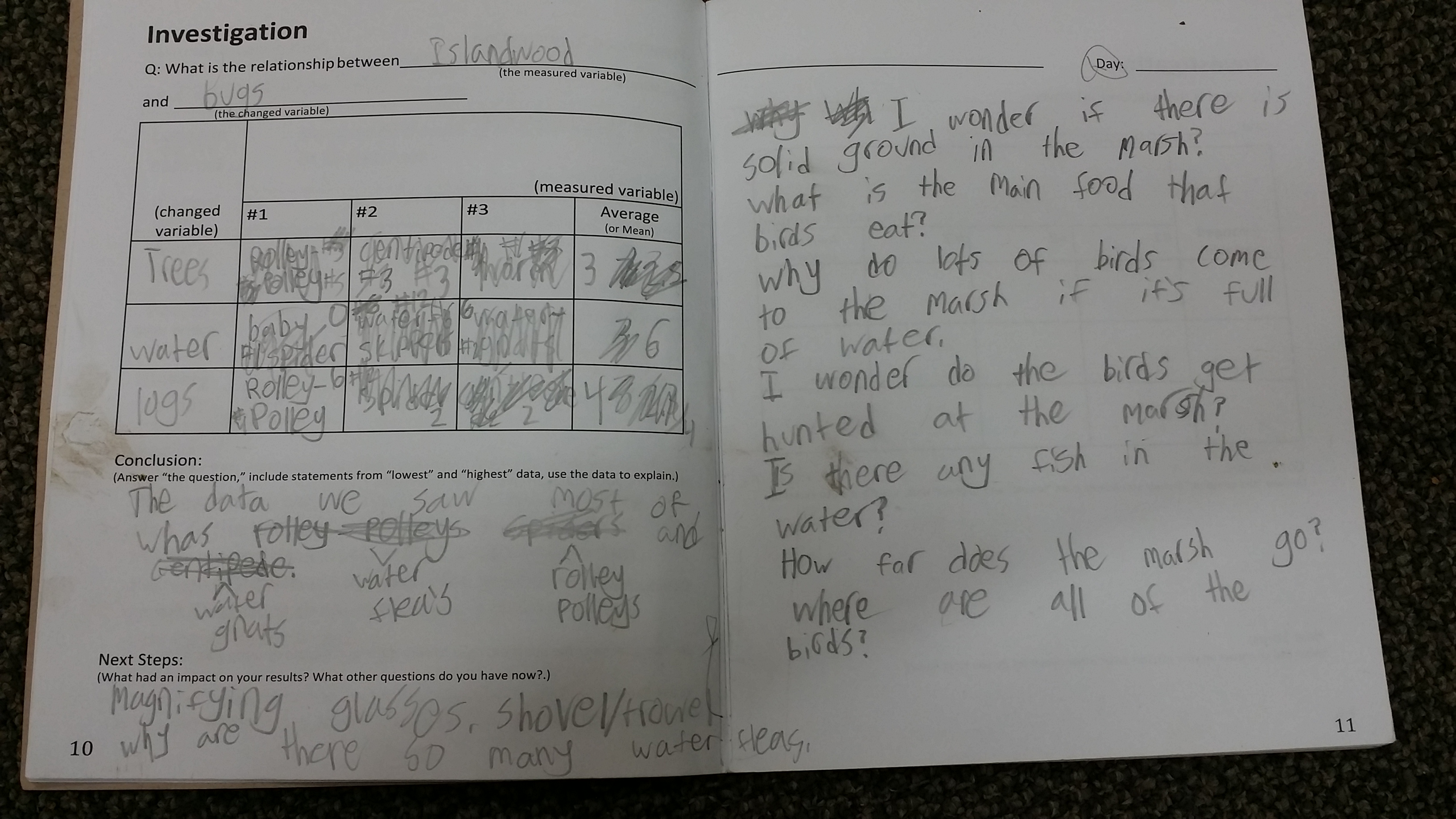Sprezzatura, what a wonderful word! It signifies a certain nonchalance, so as to conceal all art and make what one does or says appear without effort or thought. Embodying this word is easier said than done, yet with practice can be developed. In teaching environmental education, I attempt to exude sprezzatura when introducing students to investigations. Conducting a scientific investigation can be a challenging concept for students, as well as adults!
Earlier in the school year, I found the investigation to be one of the most challenging lessons of all. I had limited experience with guiding students through the process of an investigation and frequently felt frustrated at the lack of data collection. As a scientist, I strive for both quality and quantity of data, yet this is not always a realistic expectation to hold for 5th grade students. Especially given that I am only with those students for 4 days and there are buckets of other lessons to cover. While data collection is still of paramount importance to the investigations, I have shifted my priority to the inquiry. I now strive to get all my students fully engaged in investigating a natural phenomenon that captivates their attention, meaning that the students define the investigation based on their interests rather than me choosing a topic. This shift in approach reflects my adapting of experiential education where I am facilitating learning opportunities as well as keeping the instruction student-centered; I adapt my lessons and instruction based on the interests of my students.
This shift allows the students to take ownership of the investigation which frequently results in abundant data collection. By allowing students to drive the focus of inquiry, they become more fully engaged and frequently want to keep digging into their topic well past the allotted timeframe. This shift has enabled me to more easily embody sprezzatura because I am shifting the decision-making onto the students. I am acting merely as a facilitator for their inquiry, providing the students freedom to guide their own learning.

This is the mindset that I hold when introducing the investigation. I will continue to facilitate student-driven investigations, providing encouragement and guidance towards investigative questions as well as providing an assortment of resources like field guides and hand lenses. This approach is much less stressful and rigid than my previous approach and benefits my students by allowing their creativity and curiosity to flourish.
This approach to investigations keeps the learning centered on the interests of the students which translates to deeper engagement and learning. Through this approach, students are not only engaging in collaboration with their peers in their team investigation, but they are also interacting with their environment in a novel way. This inquiry-based student-led investigation is one method in which I am a servant leader.
